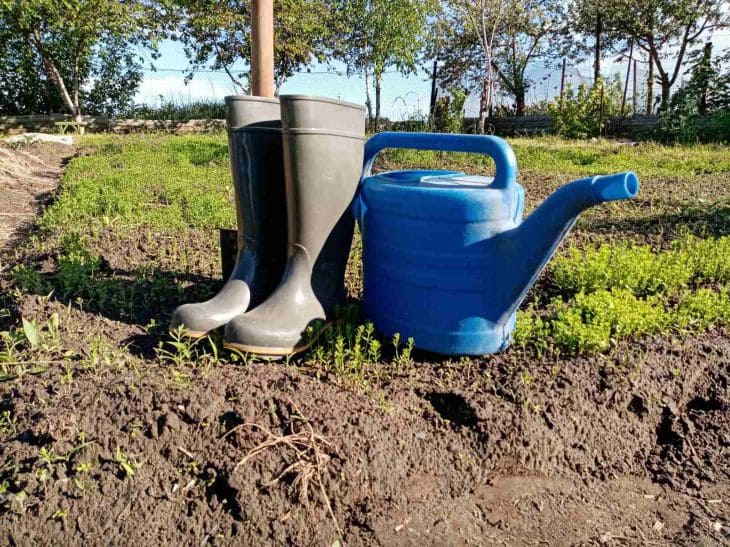Why celery doesn't grow: cultivation subtleties that will help you get an excellent harvest
Root celery is a very aromatic and healthy root vegetable that can be used in dishes both as a main ingredient and as an aromatic seasoning.
More and more often, summer residents try to grow it on their plots, but fail because celery does not form roots or grows small.
However, growing this crop is not difficult if you provide it with the appropriate conditions and know some subtleties.
Only through seedlings
It is not possible to grow large celery by direct sowing into the soil, since this crop has a vegetative period of more than 100 days.
Therefore, the first step to success is choosing an early variety. For the middle zone, varieties are suitable for which the period from seed germination to harvesting does not exceed 130 days.

Sow seedlings so that they are planted in the ground 50–65 days after emergence.
Protect seedlings from harsh conditions
Celery is a relatively cold-resistant plant. It can be planted in open ground at the end of April or the beginning of May. But do not forget that the seedlings were previously grown in warmth, so a sharp change in conditions will be a strong stress for them.
The plants will stop growing for a long time until they adapt to the new conditions. And if night frosts come, they may even die.
To prevent this from happening, gradually acclimate your plants to being outdoors.
At first, you can keep the seedlings in a cool room, then take them outside for a few days, gradually increasing the time spent in the fresh air. This way, the celery will get used to both the cold and the sun.
After transplanting, it is recommended to cover the bed with agrofibre or film. If this is not possible, it is better not to rush to plant in the bed. The plant will still stop developing until more favorable conditions for growth occur.
Practice crop rotation
When planting, do not forget to change the area every year. Celery - belongs to the family of umbelliferous, so it cannot be planted after carrots, parsley, parsnips, dill.
Plant and care for it correctly
Celery likes loose and fertile soil, as well as a fair amount of sun. Do not plant too close together. The distance between plants should be at least 40 cm. They form a large amount of tops and shade each other.
Also, to get a good harvest, you need to add organic matter (compost, humus) to the bed and water it regularly if there is no rain. Celery will grow well after zucchini and cucumbers, since after them the soil is well fertilized with organic matter.
Don't go too deep
When transplanting celery, you should never bury it too deep. Otherwise, it will develop many roots, but the root crop will not form. For the same reason, you should not hill it. The upper part of the root crop should stick out above the ground. Experienced gardeners also recommend tearing off the roots that extend from the part of the root crop that is above the ground. Otherwise, these roots will thicken, and the “head” will stop growing.
Harvesting begins in September, but if the weather is good, the plants can be left in the garden bed until the first frosts. But remember: frozen root crops do not store well.
